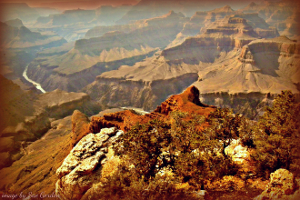 |
||
|
|
 |
Environmentally Friendly Fire Fighting Chemicals & Equipment, Woodland or Forest Fires
According to the Rocky Mountain Research Station at Fort Collins, Colorado, in the past 35 years, fire weather seasons have increased across the globe by at least 20%. Scientists also found that the burnable area worldwide has doubled, factors which significantly raise the risk of wildfire activity and damage. The key ingredients which can give rise to wildfire ignition are type of fuel, weather and source of ignition. Weather has a major effect on the occurrence of wild fires depending on things like temperature, precipitation, wind speed and relative humidity. Weather also dictates the size of area which will burn. However, when performing the relevant research, scientists took weather out of the equation so as to isolate the impact of climate change on wildfire incidences. Cost Effective Fire Fighting Chemicals in High Risk AreasNotable increases in the length of the fire weather season showed up across all continents apart from Australia, and affected most vegetation with the exception of some boreal forests. These forests often exist in cooler climates around the world such as in Canada, Russia and China and consist of coniferous trees like pine, spruce, larch, fir, poplar and birch. Boreal areas are also composed of lakes, wetlands, rivers a treeless zones like coastal regions and mountains. While these places seemed unaffected by fire season lengthening, they have not escaped the apparent effects of climate change, as alterations were still acknowledged regarding regional frequency of longer fire seasons. The tropical and sub-tropical forests, savannas and grasslands in South America have for instance, seen staggering changes in length of fire weather seasons, demonstrating a meridian increase of an alarming 33 days in 35 years. Fire Monitoring & Prevention Range of Products, Foams, Dry Powders & Wetting AgentsWork is ongoing in an effort to explain the complex patterns and trends involved in wildfire activity and occurrence. This is done on a variety of geographic scales including local, regional, national and international. Only when the reasons for this trend are understood, can effective attempts be made to manage these disastrous incidences, which have devastating ecological and socio economic consequences. Specialists in fire fighting technology are constantly striving to develop the most high performance chemicals, equipment and methods for fire prevention and containment. Forest fires are an unfortunate fact of life in areas of the western United States like California, where bone dry weather conditions caused by heat and droughts precipitate combustion. The consequent infernos become near impossible to control when strong winds are added into the mix. Los Padres in southern California is a frequent destination for those who love to camp and hike, but when conditions prove worrying, evacuation is often necessary in order to avoid injury or even loss of life. Camp fires can be subject to a ban in some areas prone to forest fires too. Decreased rainfall is always a red flag and generates a general awareness of the amplified likelihood of fire. Fire Attack Systems, Extinguishers & Foam InducersThe high incidence of wild fire activity has implications regarding community protection, forest ecosystems, forest activities and carbon budgets. Some interesting figures from NASA, include information on the impact made globally by things like forest fires. They state that human activity has caused carbon dioxide levels to grow by 25% since the industrial revolution. Industrialisation has seen around165 billion metric tons of carbon dioxide added to the atmosphere, due to burning coal, gas and oil. It is estimated that between 1850 and 1980, forest fires were responsible for between 90 and 120 billion metric tons (90-120 trillion kilograms) of carbon dioxide being released into the atmosphere. Currently each year sees approx 5.6 gigatons of carbon released into the atmosphere as a direct consequence of the burning of fossil fuels. This includes 2.4 gigatons of carbon per year produced by forest fires which is around 30 percent of the total. It is estimated that in the few months in 1997 during the catastrophic Indonesian forest fires, greenhouse gases were released equalling the amount produced by all the cars and power plants in Europe in a whole year. Environmentally Friendly Fire Fighting Chemicals & Equipment, Woodland or Forest Fires. Cost Effective Fire Fighting Chemicals in High Risk Areas, Fire Monitoring & Prevention Range of Products, Foams, Dry Powders & Wetting Agents. Fire Attack Systems, Extinguishers & Foam Inducers |
Back to top |
Home | Profile | Equipment | Articles | Downloads | FAQ | Glossary | Contact | Site Map | Cookie Policy | Visit Our Blog
Website Designed and Hosted by Autus